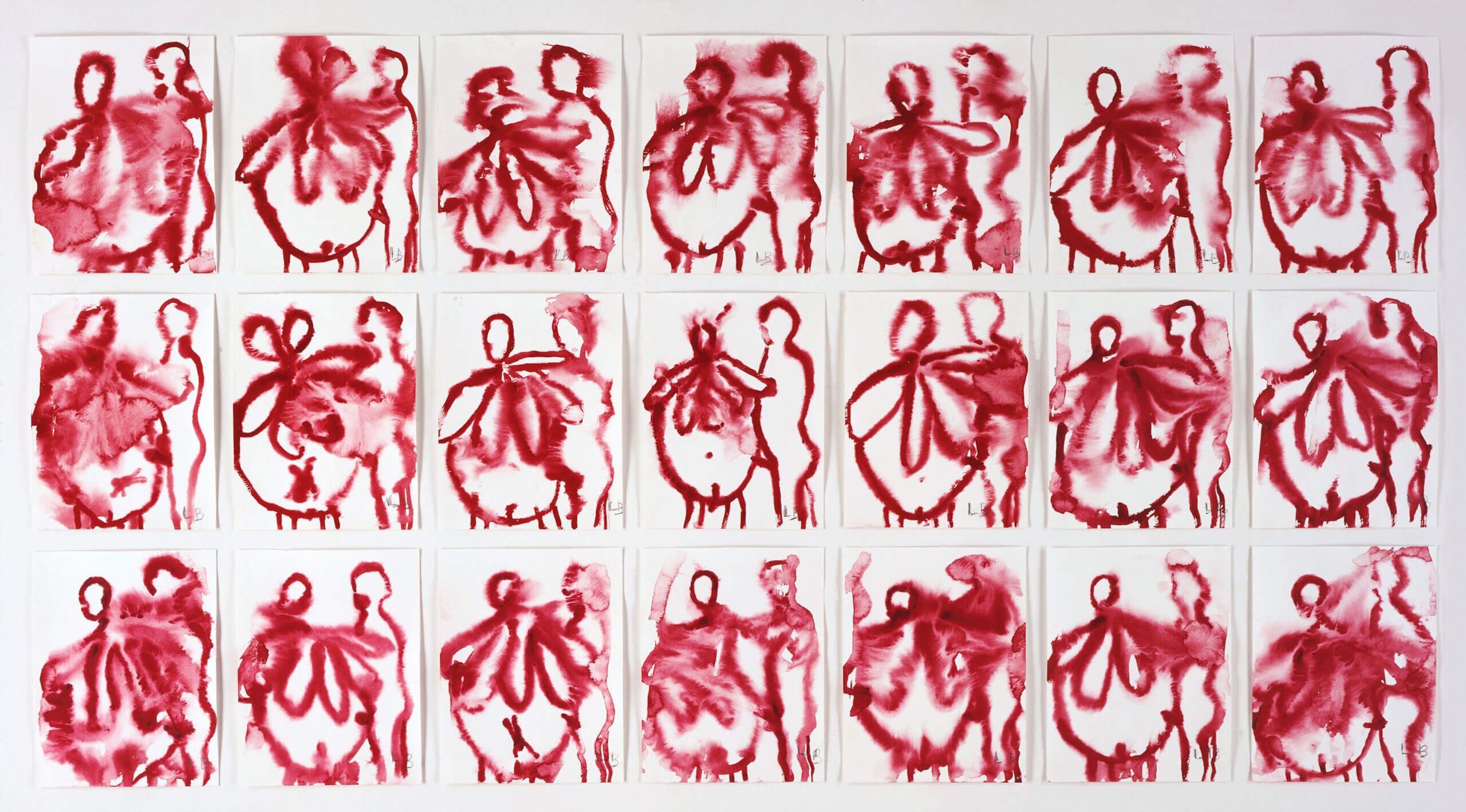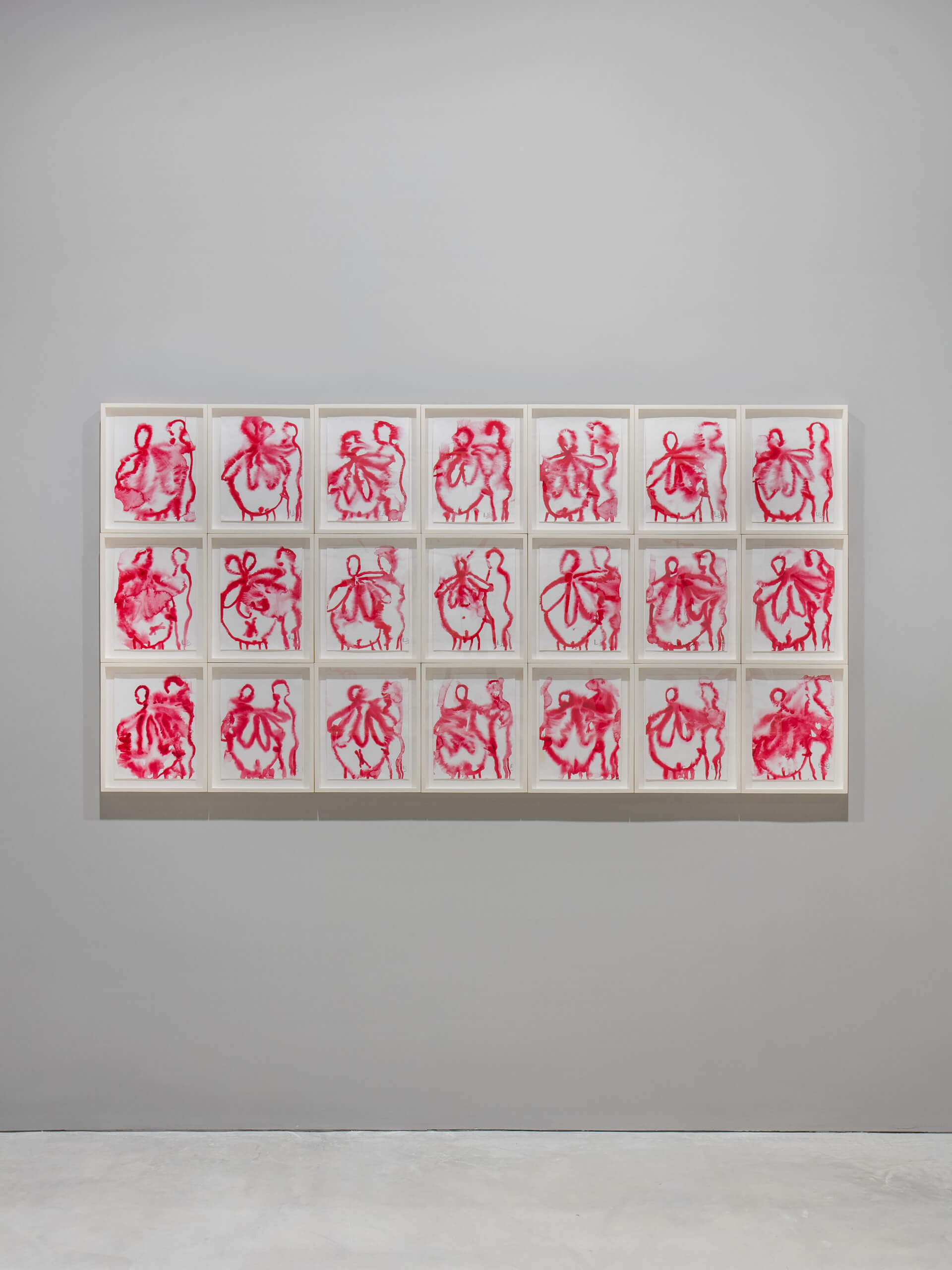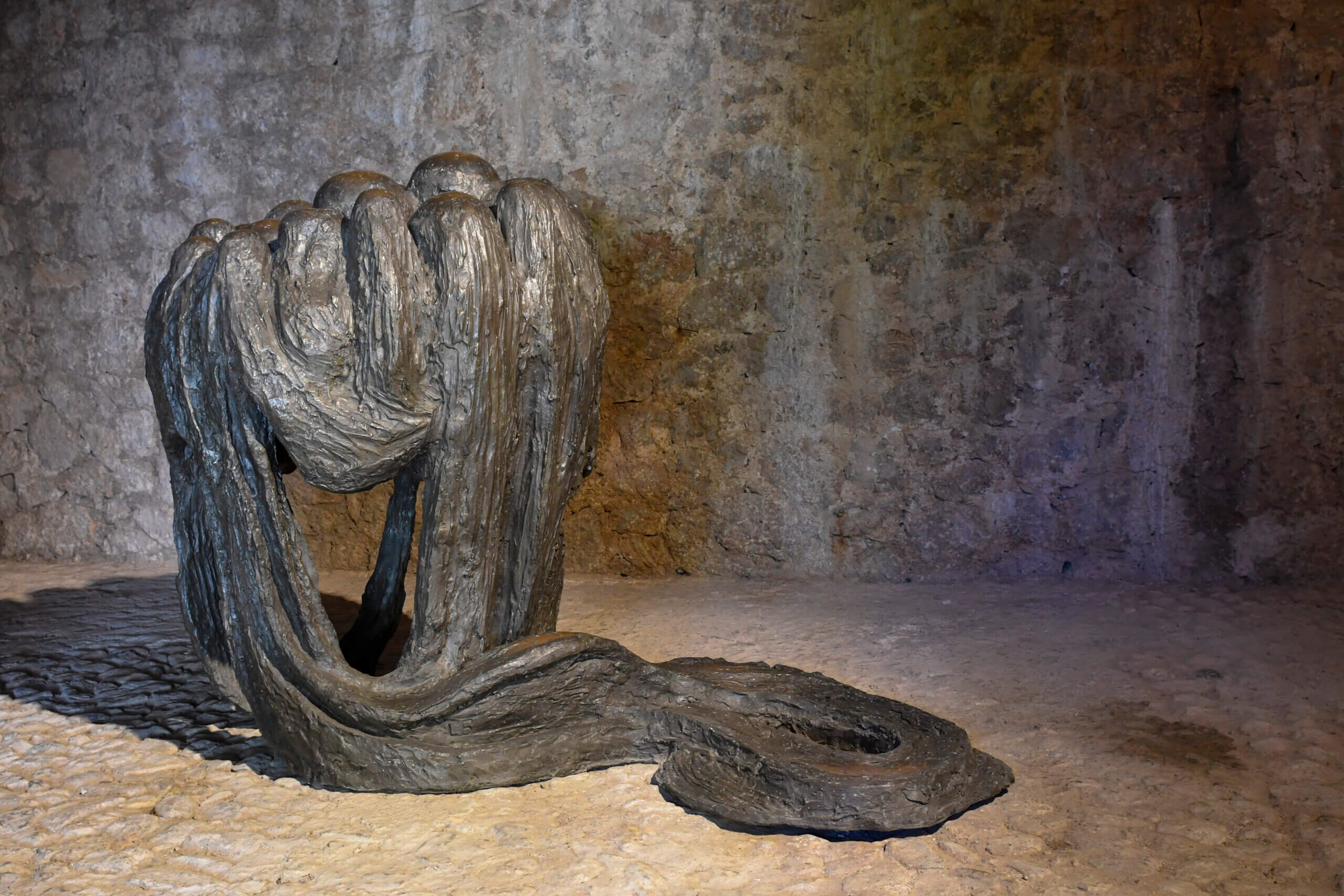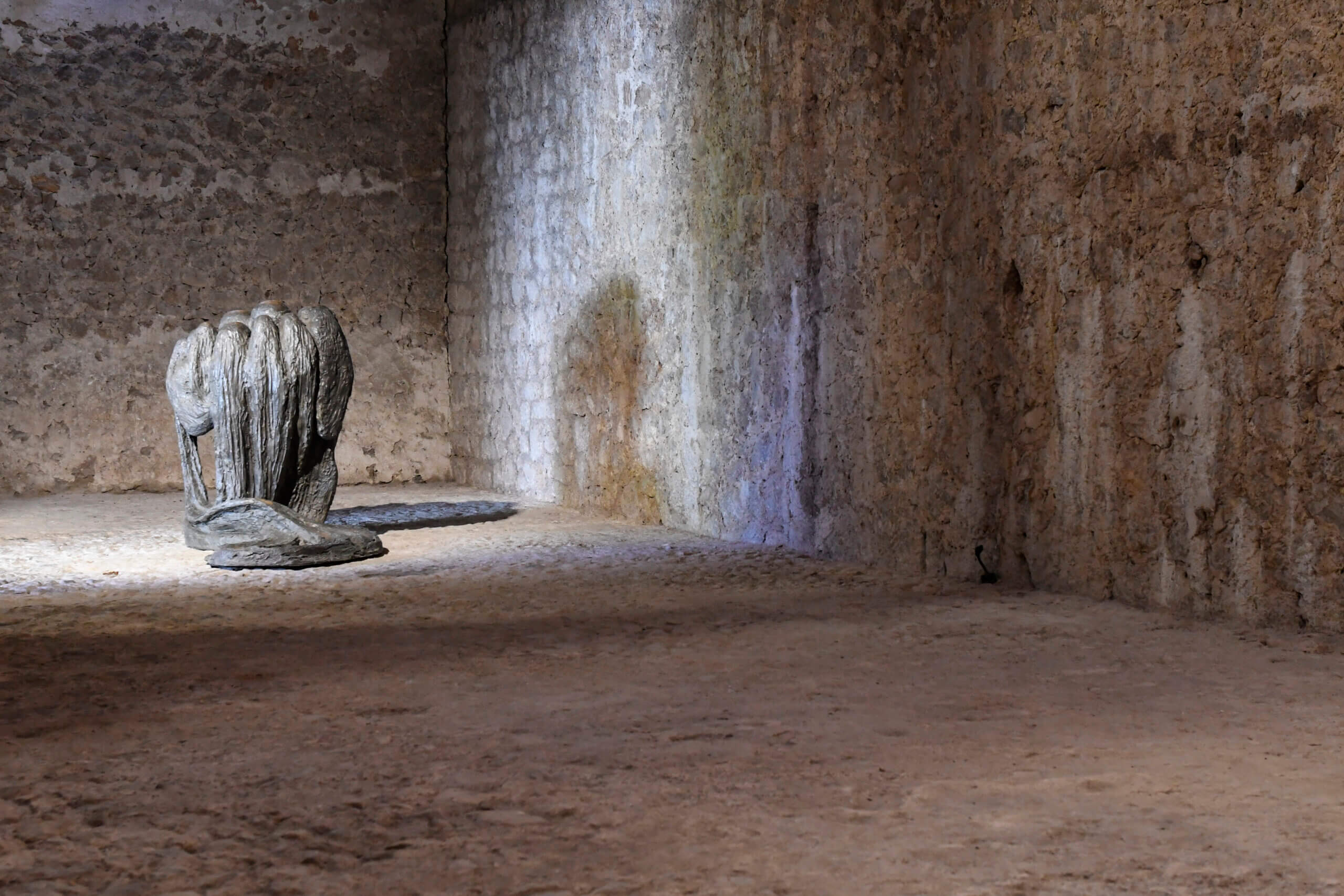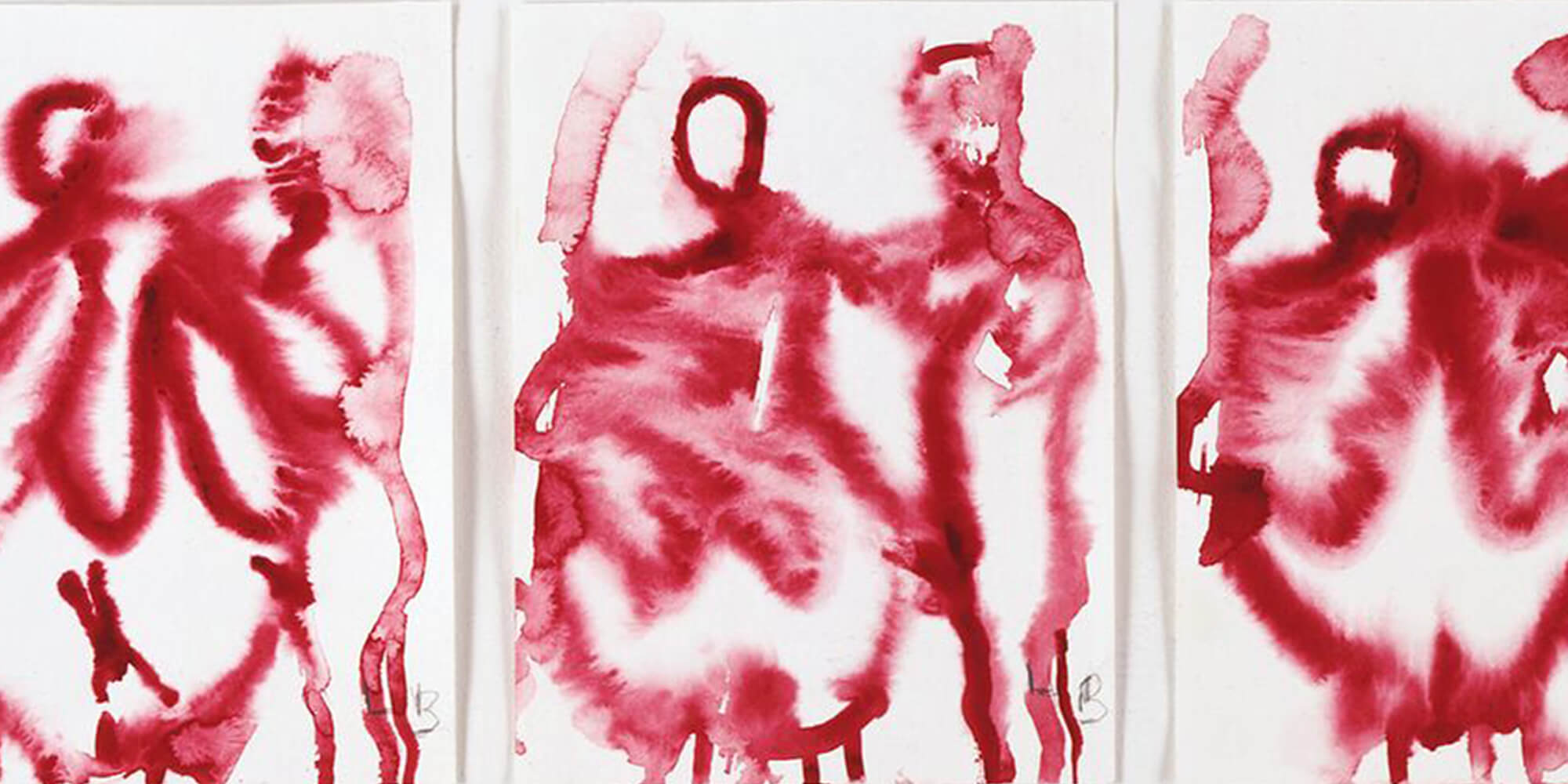
Louise Bourgeois
The Family
The Family
2007 Gouache on paper, suite of 21 29.2 x 22.9 cm / 11 1/2 x 9 in (each sheet)
'The Family' (2007) examines many of the themes that occupied the artist throughout her extraordinary career. Created three years before she passed away at the age of 98, 'The Family' is especially remarkable in its tender brutality, reflecting Bourgeois's repeated engagement with the cycle of life, the polarities of birth and death, growth and decay, separation and togetherness. A suite of 21 vivid red works on paper, 'The Family' depicts moments of sexual intimacy. Unlike many idealized portrayals of the subject, Bourgeois's work approaches it with honesty, revealing the pain, the struggles, the issues with identity and the dependency engendered by familial relationships.
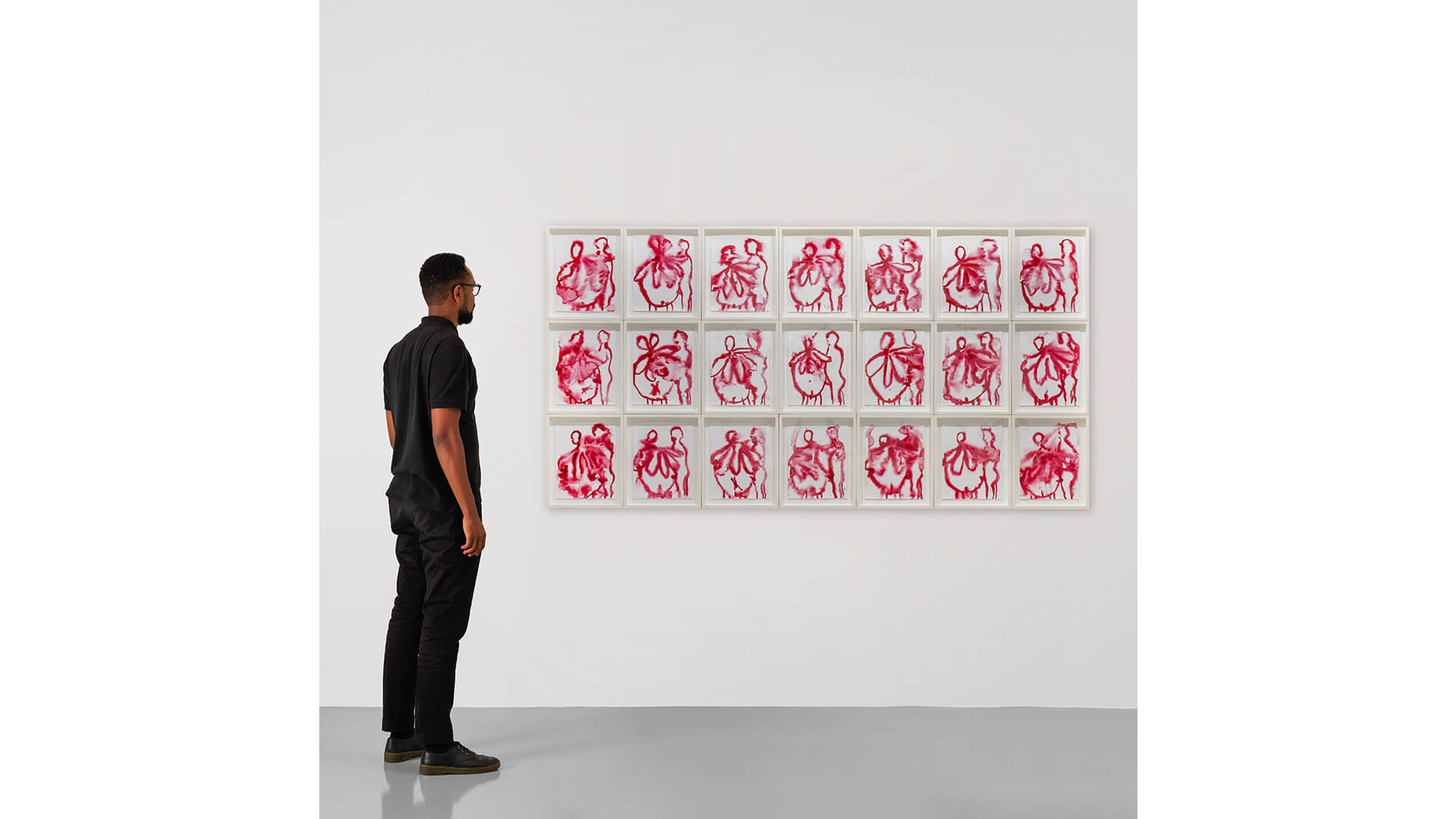
The intimacy of family and the primal connection between mother and child has provided Bourgeois with a fertile subject matter from as early as 1941. Her preoccupation with these themes was influenced by her own experiences of motherhood, the drama of her childhood, and her close relationship with her own mother, who died when Bourgeois was just twenty years old. Confronting her own mortality, Bourgeois reverts to images of fertility and the creation of life. Here, the womb articulates the wish to merge completely with the lost mother, and simultaneously symbolizes the perfect home, an ideal of security and repose.
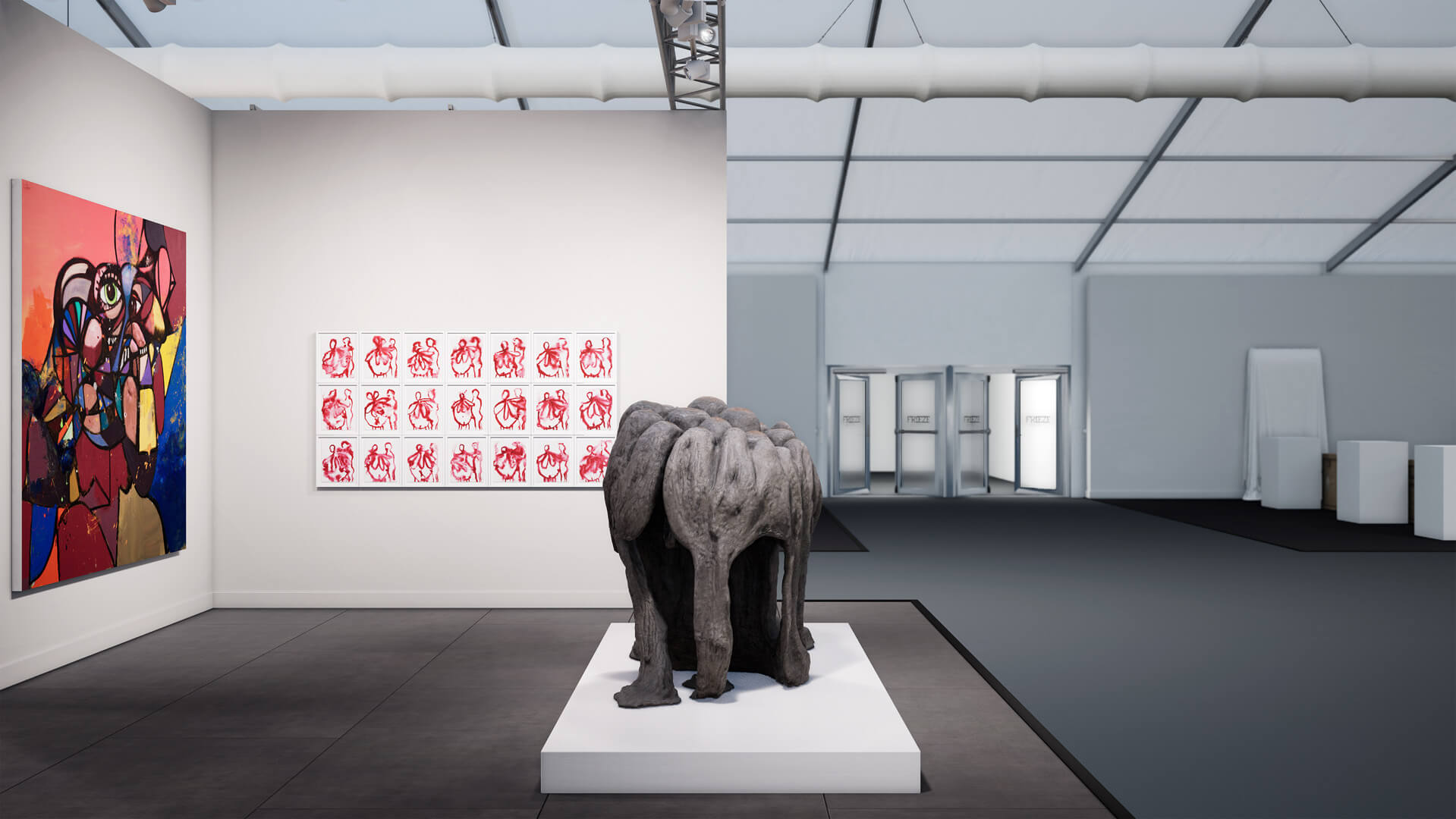
Graphic and raw, the blood red paint is at once bodily and ethereal. Applied using a 'wet-on-wet' technique, the paint was allowed to bleed and coalesce, leaving a range of organic, accidental marks that complement the corporeal nature of the imagery. In 'The Family', the female form is depicted as an abstracted fertility symbol with multiple pendulous breasts hanging from her neck and a bulging womb. Bourgeois viscerally illuminates the tenuous nature of families, abstractly morphing bodies and collapsing psychical and psychological states to explore nuanced scenarios between the couple, and mother and child.
'I have the frame of reference of my father and mother, and that of my own experience. I have the frame of reference of my children. And the three are stuck together.'—Louise Bourgeois
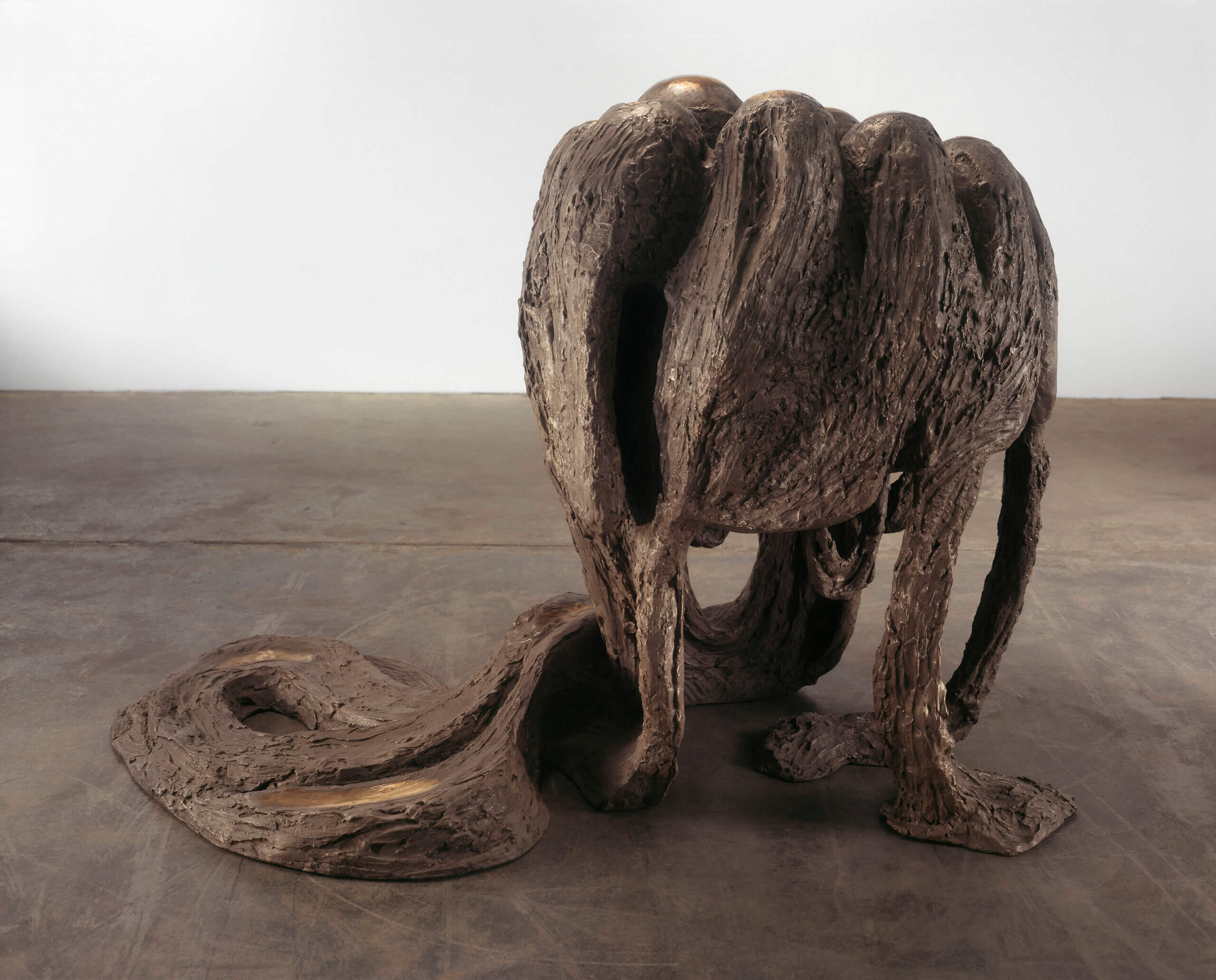
Avenza Revisited II
1968-1969 Bronze, silver nitrate patina Edition of 6 130.8 x 104.1 x 191.7 cm / 51 1/2 x 41 x 75 1/2 in
Inspired by the marble quarries of Italy’s Carrara region, ‘Avenza Revisited II’ (1968-1969) has its roots in the first iteration, ‘Avenza', created in the same years. Bourgeois first travelled to Carrara to work with its world-renowned marble in 1967 and worked there for a short period in the late 1960s. Originally made from plaster, and later cast in plastic, latex and bronze, ‘Avenza’ belongs to a group of works made in the late 1960s and early 1970s, which Bourgeois has described as representing ‘anthropomorphic’ landscapes. ‘Our own body’, she writes, ‘could be considered, from a topographical point-of-view, a land with mounds and valley and caves and holes’.
Created by taking a cast of ‘Avenza’ and adding the coiled shapes that appear to hang and drip from the central structure, ‘Avenza Revisted II’ juxtaposes its soft, organic shape with the brittle material of its facture. Cast in bronze, the original is made from plaster, whose fluid properties are easily transformed from liquid to solid. Bourgeois thus transforms the low floor piece of ‘Avenza’ into a freestanding sculpture, which appears to overflow in expansive rivulets to the ground below.
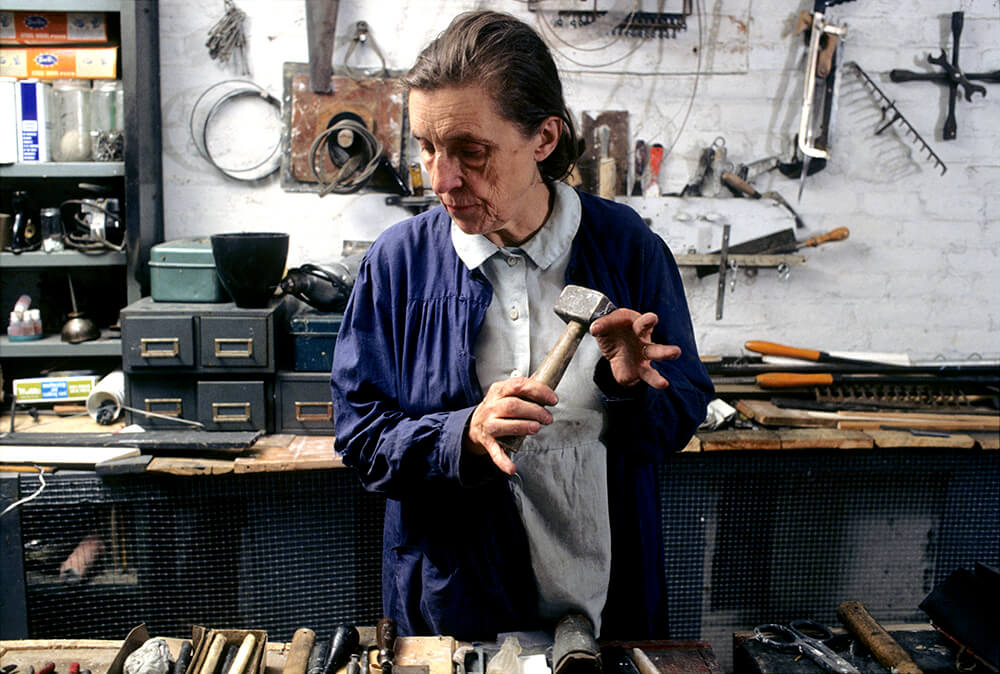
Louise Bourgeois
Born in France in 1911, and working in America from 1938 until her death in 2010, Louise Bourgeois is recognized as one of the most important and influential artists of the twentieth century. For over seven decades, Bourgeois’s creative process was fueled by an introspective reality, often rooted in cathartic re-visitations of early childhood trauma and frank examinations of female sexuality. The conceptual and stylistic complexity of Bourgeois’s oeuvre plays upon the powers of association, memory, fantasy, and fear.
© The Easton Foundation / Licensed by VAGA at ARS, NY

